Fifty-one years ago, IBM introduced the first floppy disk drive, the IBM 23FD, and thus the first floppy disks were born. Let's take a look at her amazing story over the years.
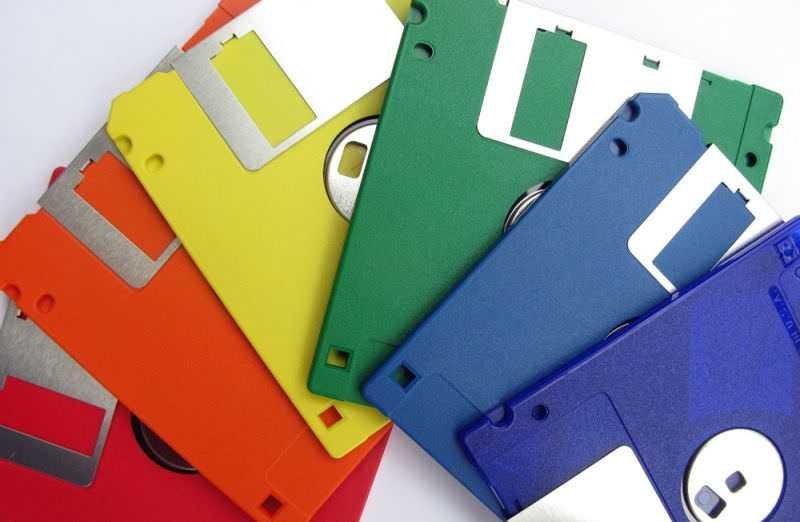
Floppy disks came fifty-one years ago to replace punched cards. The difference in technology and ease of use was so great that floppy disks ruled for the next 20 years. Not only that, but the floppy disk became an icon and an international symbol that still exists today.
The need to replace punch cards
During the 1960s, IBM sold many mainframe computers with magnetic core memory, which could retain its contents even when the machine was turned off. As the mainframe computer industry began using solid-state transistor memory, this memory lost its contents when the machine was turned off.
IBM felt it needed a way to quickly load new machines with system software when they were brought back into service. The conventional solution required loading data from stacks punch cards or reels of magnetic tape, which were slow and bulky.
This drove in 1967 in a search for a new removable storage medium that could retain information without power and could be easily transported to remote computer installation locations.
Creating the diskette
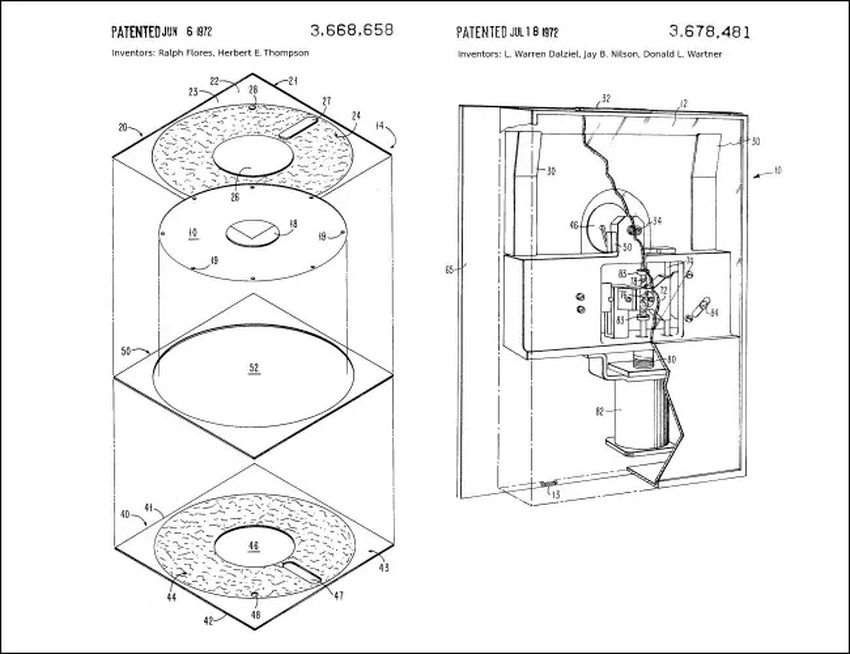
Soon, a team of IBM engineers led by David L. Noble created a rotatable flex plastic δίσκο εμποτισμένο με οξείδιο του σιδήρου που μπορούσε να συγκρατήσει ένα μαγνητικό load similar to magnetic tape. To improve reliability, the team placed the disk inside a plastic case surrounded by fabric that could sweep away dust as the disk spun.
And so in the life-saving year of 1971, IBM introduced the world's first commercial floppy disk drive, the 23FD floppy disk drive system. It used 8-inch square floppy disks, which held about 80 kilobytes.
With one notable limitation: the drive could only read data, not to write them.
A special disk drive at IBM wrote the floppies which it then distributed to remote computer systems to boot the system. Originally, IBM called the first floppy disk the “Magnetic Recording Disk” or “Magnetic Disk Cartridge.” (Magnetic Disk Cassette).

Later, IBM called its new disk a "floppy disk" because it was flexible, unlike aluminum hard drives that had preceded. The idea of a spinning disk was so original that the ComputerWorld described the competing floppy disk technology developed by Innovex in 1972, as "sheet of magnetic tape".
In 1973, IBM released an improved version of the 8-inch floppy disk called the “IBM Diskette” (“Diskette” meaning a small disk and also possibly referring to its secondary position relative to hard disks in a system computer).
With IBM's equivalent 33FD disk drive, users could write data to disk as well as read from it, thus establishing the new medium.
Accepting the floppy disk
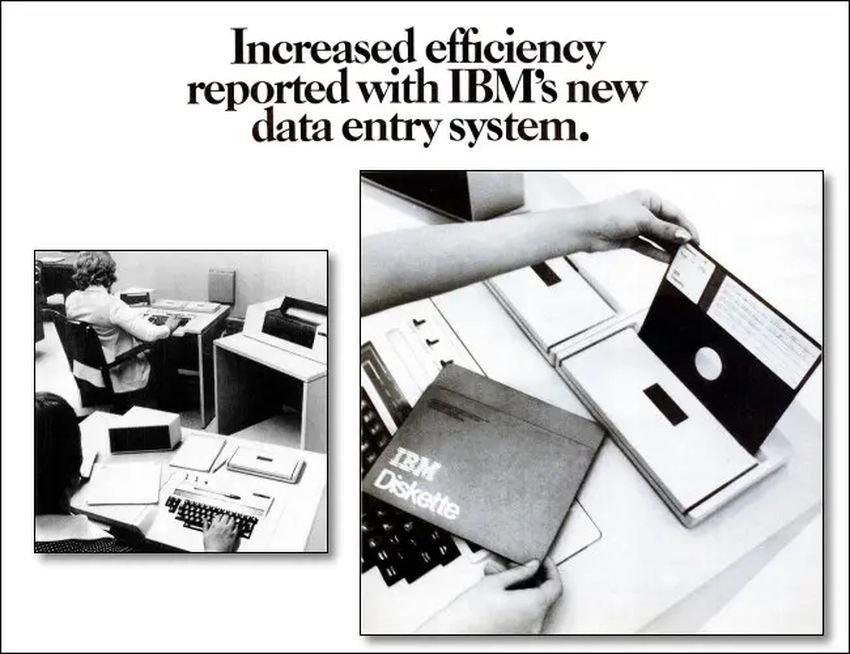
The new IBM Diskette read-write medium first found use in IBM 3740 Data Entry System, which the company designed to replace data entry systems “keypunch” used at the time and would write data onto stacks of punched cards.
The floppy disk represented a breakthrough in computer data storage, with each diskette to be equivalent to about 3.000 punched cards in data capacity. Compared to huge stacks of punched cards, the floppy disk was small, portable, light, cheap, and rewritable.
The technological difference was huge, so competing companies soon began creating 8″ floppy drives that could read and write to IBM's floppy format, and a new standard was born.
From Mainframes to PCs
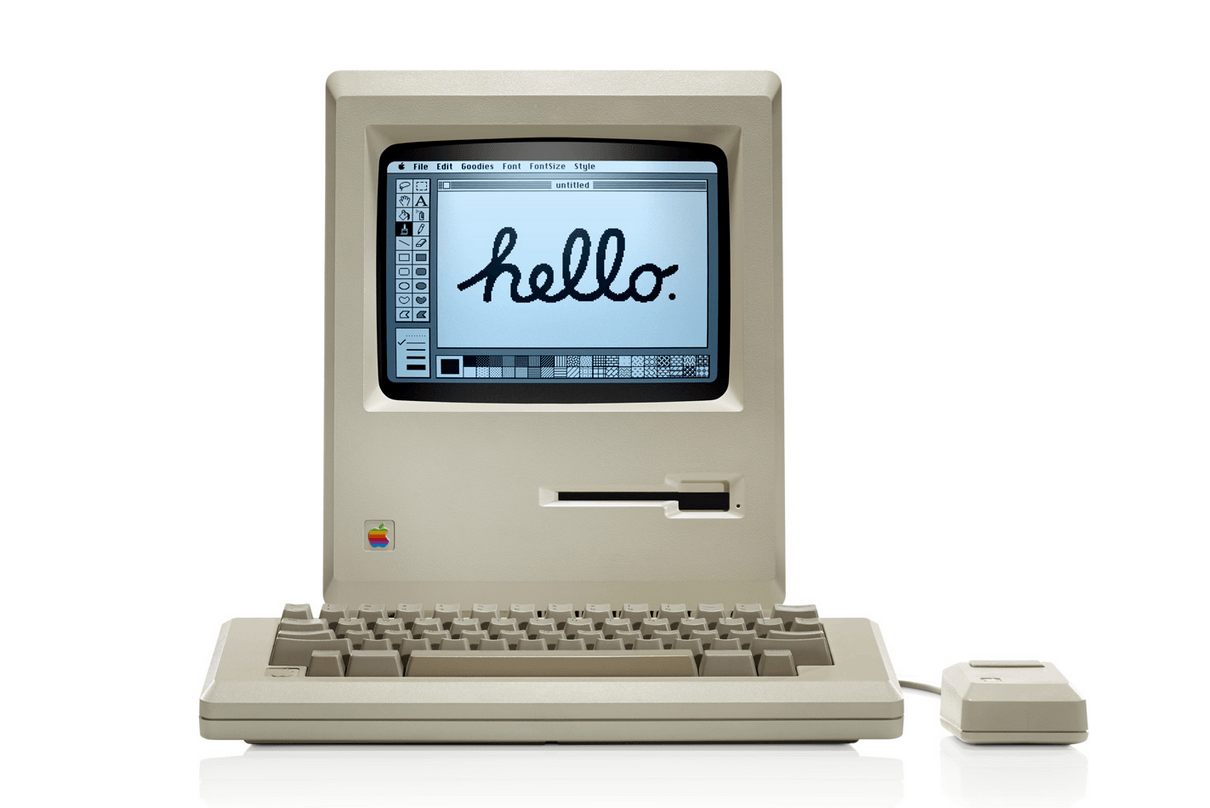
While initially the high cost of 8-inch floppy drives and drivers kept many early computer hobbyists stuck with punched cards, floppy disk technology continued to advance. In 1976, Shugart Associates invented the 5,25″ floppy drive, which allowed for smaller and cheaper media and floppy drives.
The breakthroughs of consumer computers, such as the Disk II system by Steve Wozniak for the Apple II, brought floppy disk storage to the masses in the late 1970s.
Floppy disk drives became standard equipment for early business personal computers around the late 1970s. In 1981, IBM the PC 5150 was released with slots for two internal 5,25″ floppy drives, further enhancing their use in industry.
Floppy disk formats
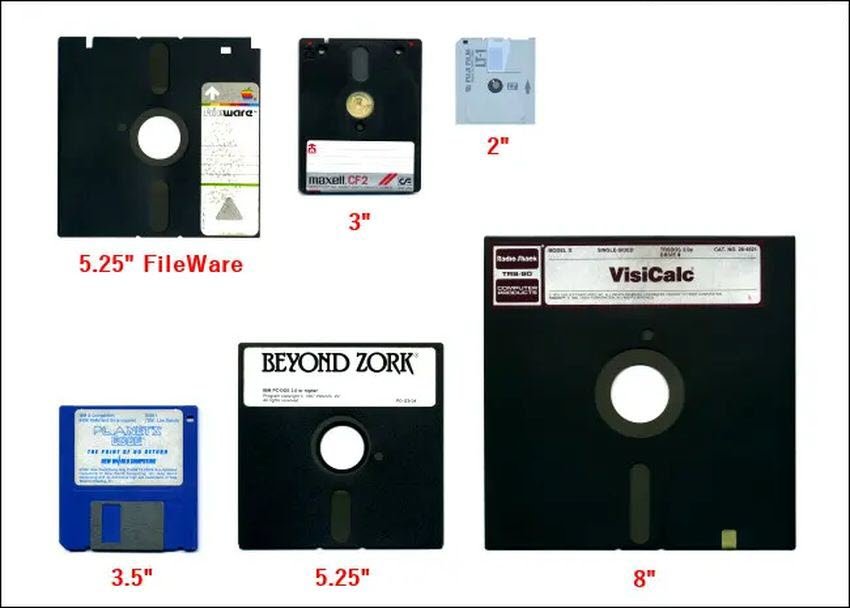
Over the course of four decades, dozens of manufacturers experimented with different floppy disk formats and densities. Here's a list of some notable efforts, including some we've already mentioned.
- 8-inch magnetic disk cassette (1971): When introduced by IBM, the first 8-inch floppy disks held only 80 KB of data and were not designed to be written to by the user. But they set the standard that was copied by later floppy disk formats.
- IBM 8-inch floppy disk (1973): The first read-write floppy disk system from IBM released with the IBM 3740 data entry system. Early disks could hold about 250 KB. Later 8-inch floppy disk formats could hold up to 1,2 megabytes per disk.
- 5,25 inch (1976): Invented by Shugart Associates. The original 5,25-inch floppy disks could only hold about 88 KB. By 1982, a 5,25″ high-density floppy could hold 1,2MB.
- 3 inch (1982): A joint project between Maxell, Hitachi, and Matsushita, the 3-inch “Compact Floppy” ships in a hard shell and originally had a capacity of about 125 KB (single-sided format), but was later expanded to 720 KB. It was mainly used in word processors and Amstrad computers, but never became widespread.
- 5,25″ Apple FileWare (1983): This special format of 5,25″ floppy disk with two read head windows used only in the Apple Lisa computer, can hold about 871 KB of data. Apple soon discontinued its use in favor of Sony's 3,5″ drives which were added to future models.
- 3,5 inch (1983): Several companies shipped the first 3,5-inch floppy disks based on a Sony design that could hold 360 KB in the single-sided or 720 KB double-sided configuration. Newer versions could store up to 1,44 MB or 2 MB of data.
- 2 inch (1989): In 1989, both Sony and Panasonic debuted 2-inch floppy drive formats that found use in Japanese word processors, camcorders, and most notably the Zenith Minisport laptop. Sony's format could hold 812K of data and Panasonic's 720K.
- 3,5″ Floptical (1991): Developed by Insite Peripherals, this obscure format used special 3,5″ floppy-disk-like drives that held 21MB each, thanks to optical head-tracking technology that dramatically increased its density.
- Zip Disk (1995): Iomega's 100 MB Zip drive became an alternative floppy disk standard in the late 1990s and early 2000s. Later models held up to 750 MB of data.
- 3,5″ Imation SuperDisk (1996): The last 3,5″ floppy drive (in terms of new densities) came in the form of this 120MB magnetic disk, which achieved high data densities thanks to laser tracking techniques. In 2001, Imation released a 240 MB version of the disc. As a bonus, the SuperDisk drives could also read regular 3,5″ floppy disks.
The floppy disk as a storage icon

With so many people using floppy disks to store data on personal computers in the 1980s and 1990s, software programs in the GUI era began to represent the act of storing data with a floppy disk icon.
Decades later, the trend remains in many programs, such as Microsoft Word and Microsoft Paint.
It has come under heavy criticism in our time, due to the fact that many of today's computer users did not grow up using floppy disks, so they may not even know what a floppy disk is!.
The last decade, there's a joke going around the internet where some geek thinks a real floppy disk is a XNUMXD printed “Storage” icon.
Visualization is everywhere on program interface screens. Gears representing internal operation (Settings), cameras representing a camera app, and vintage phone handsets often used as "call" buttons or phone app icons.
While some younger people may not know what a floppy disk is today, they probably already know that it represents the action of “storage,” even if they don't know its origin.
Read: How old are you;
Technological jargon was not created from scratch. The "dashboard" (Dashboard) was originally a wooden panel on the front of a carriage designed to protect riders from mud kicked up by horses Over time, the word took on new meaning as it came to represent different things, from car interiors to interfaces software.
Will the diskette save icon end up like this too? Only time will tell.
The end of the floppy disk
After the introduction of the CD-ROM drive in the 1980s and its mass adoption in the 1990s, and then with competition from Zip Disks, CD-Rs, USB thumb drives and others, the 1,44 MB floppy disk format – 3,5 inches seemed doomed.
But the format lasted much longer than expected, existing on PCs well into the mid-2000s, thanks to its traditional role of providing BIOS updates to PC motherboards and as a cheap way to distribute device drivers for PC peripherals.
As strange as it may seem to you, it still exists today, to the International Space Station. Tom Persky, the founder of floppydisk.com, he claims that he is the "last man in the floppy disk business", and reports that the airline industry is one of his biggest customers!.
Apple, however, made a decisive move against the floppy disk in 1998 with the release of the iMac, which controversially omitted any kind of floppy drive for the first time in Macintosh history.
Apple assumed that people could transfer files over LANs, CD-ROMs, and the Internet, and the company was largely right. Without the legacy reliance on floppy disk BIOS upgrades, the Mac was now free to cut any bridges with the floppy disk.

While some people still used floppy disks for fast data transfers well into the late 2000s, the commercial end of the floppy disk had finally arrived.
2010, the Sony announced that will stop floppy disk production in March 2011 due to declining demand, and today only one manufactures floppy disks, at least as far as we know.
Today, many vintage computer hobbyists still use floppy disks, just for fun. However, if you still have important data on floppy disks yourself, it's probably best to create one copies security in more modern formats, because the old floppy disks data may be lost over time due to environmental damage or loss of magnetic charge on the disk surface.
Either way, 51 years after the introduction of floppy disks, it's amazing that the technology is still with us. We'd say it's a big hit and IBM is rightly proud for herself who originally invented the medium.






When I first got into computers, there were 3.5”, 720KB and 1,44MB floppy disks. The former had a square hole on one side and the latter 2. One day I thought of drilling a second hole in a 720KB floppy. I took a file with a round handle, heated it with a stove and drilled the 2nd hole where the 1.44's were. I format it and wow, the 720 KB has doubled!!! All the attempts I made were 100% successful. I still have floppy disks from that era!!!
Unbelievable!! I haven't tried it but it sounds really amazing!
That I was about to comment on….
One of the best hacks of the 90's...
Floppy disks 1,44 custom made and at "half price"!!!!!
It was really incredible how the capacity doubled with just one hole!!!!